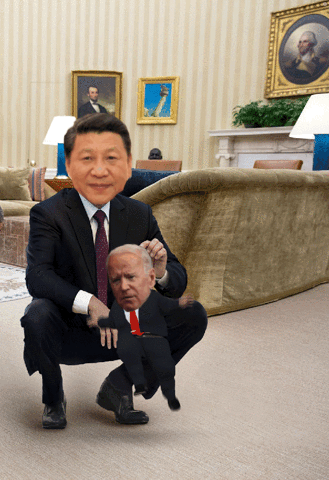#China Business News
Explore tagged Tumblr posts
Text
#china news#asian news#news wire#viral news#black news#business news#breaking news#world news#celebrity news#news#public news#hollywood news#palestine news#crypto news#usa news#new#washington post#new york times#Dallas morning news#ballet choreography#ballet#dance#dancer#male dancer#him#love#male#men#man#gay love
57 notes
·
View notes
Text


He got them to join his emo band 😔🤟
The new year's show was a success and it became a yearly thing.
This is kind of a continuation of my headcanon and brainrot posts about Chiba's friendship with Gakushuu and Yukiko, with a bit of my oc Isami bc I'm not really normal about him 🩵
#i was supposed to post this a few days ago but i got so busy i barely had the time to even sit down 😭#not to mention the consecutive power outages 💀#to sum the lore up#china befriended shuu during finals and later got him to do things (this was just one of them)#he and yukiko had a secret-identity solidarity and began doing undisclosed shenanigans#and he helped isami with studying for their finals the year after so ofc my fair boy would want to help him out in return#so now the band has three fixed guest members that only joins them during special events like festivals and new years shows#🥰#assassination classroom#assassination classroom oc#ansatsu kyoushitsu#ansatsu kyoushitsu oc#assclass#assclass oc#chiba ryuunosuke#ryuunosuke chiba#gakushuu asano#asano gakushuu#kanzaki yukiko#yukiko kanzaki#matsuoka isami#isami matsuoka#my art#digital art#my doodle#art#my headcanons#assclass headcanons#I haven't doodled in this style for so long i miss it sm
79 notes
·
View notes
Text
Once able to lay credible claim to the title ‘America’s most beautiful city’, since the pandemic it has degenerated into the poster child of American inner-city degradation, with iconic neighborhoods like the Tenderloin and South of Market swamped by the tented encampments of the homeless and the attendant rampant drug use, shootings, stabbings, ubiquitous street filth and general lawlessness, while city authorities and police have looked the other way.
Suddenly the squalor has gone – at least for now.
Streets and sidewalks were steam-cleaned, public spaces tarted up, police patrols multiplied. Public defecation ceased, needles no longer littered the streets. Legal impediments previously cited as a block to doing any of this mysteriously evaporated, like San Francisco fog when a strong sun comes up.
There is something hugely comical about all this, something distinctly third world for a city – for a country – which is meant to be one of the most sophisticated, prosperous, and high-tech on the globe.
For decades squalid capitals in developing nations carted off the poor and gave their street fronts a fresh lick of paint before visiting US presidents and other world leaders cast their eyes on them. The communist bloc was a dab hand at doing the same before the Berlin Wall came down in 1989. And now San Francisco has joined their ranks.
Comical. But also pathetic.

"NO GROUP IN AMERICAN HISTORY HAS DONE WORSE JOB RUNNING THIS COUNTRY THAN THE NEO-LIBERALS CURRENTLY IN CHARGE. THEY'RE VICIOUS, THEY'RE INTOLERANT, & THEY ARE UTTERLY CORRUPT. BUT, ABOVE ALL, THEY'RE INCOMPETENT."
~ Tucker Carlson
#Business and Economy China Political Manipulation Problem-Reaction-Solution World News#Biden corruption#Chinese President Xi Jinping#Tucker Carlson Quote#David Icke
117 notes
·
View notes
Text
oh hi!!! I haven't seen anyone on tumblr talk about this yet, so I wanted to make sure you all know that the new miniseries "Journey To China" is being uploaded on yt!!
here's a link!!! 🤲🤲🤲
we've been getting three eps a day so far, and there's already nine* uploaded!! and they're vERY GOOD PLS WATCH THEM— ok byeeeeee 🥰🥰👋👋🥰👋🥰👋🥰
(*7 are currently up on OctoWorld's channel, which is who I linked, and the other 2 are up on Mariana Trench's channel—but I'm sure OW will have the last 2 up soon too!)
#i bet u guys will ✨ NEVER ✨ guess what my 2 fav eps are so far 😏😏 (/s i'm very predictable HEHEBDJ)#octonauts#octonauts journey to china#new tag babeyyyy 😎😎#pspspsps i need fan art of xiao-wu (the leopard guy) PRONTO tyvm 🙏👀#side note hi yes i'm alive yayayyyayyay skdhsjskl i've been busy w school but the sem's almost over soooo 👀#fret not! my octofixation has NOT dwindled in the slightest LMAO--#i have been so tempted to turn asks back on so i can talk about anb s3 w u guys....... but alas. i Must clear my askbox first 💪💔#and now THIS comes out!!! AUGGHHGHH— *explodes*#hopefully i'll exist more in the near-ish future. Hopefully.#ok end post <3
59 notes
·
View notes
Text



Zhang Xincheng for Vogue Business in China New Fashion Capital Index Report 2023 event
11 notes
·
View notes
Text
Russia adopts Chinese Yuan as main exchange

View On WordPress
#business#china#currency#dollar#Euro#exchange#meme#memes#money#news#ruble#russia#sanctions#trade#ukraine#united states#yuan
4 notes
·
View notes
Text
Worldwide Insurance Companies along with detailed information
Gathering a complete list of all insurance companies worldwide, along with detailed information about each, is a vast and complex task. The number of insurance companies globally is in the thousands, varying across regions and industries (life, health, property, casualty, etc.). Additionally, companies frequently merge, change names, or cease operations, which makes maintaining an up-to-date list…
#Allianz#Auto Insurance#AXA#Berkshire Hathaway#Business Insurance#Check for Discounts and Benefits#China Life Insurance#clarity of policy information#Credit Score#Critical Illness Insurance#customer experience#customer service#financial stability#Group Health Insurance#High ratings#Homeowners Insurance#Individual Health Insurance#insurance companies#Insurance company#insurance company&039;s#investment#Investment Performance#Life insurance#lower risk#MetLife#Monitor and Review#Munich Re#New York Life insurance#Northwestern Mutual#Pet Insurance
5 notes
·
View notes
Text
#1. Global Politics#“2024 US Election”#“Russia Ukraine conflict”#“China Taiwan tensions”#“Israel Palestine ceasefire”#“NATO expansion”#2. Technology & Innovation#“AI advancements”#“Quantum computing breakthroughs”#“ChatGPT updates”#“5G technology”#“Electric vehicles news”#3. Climate & Environment#“Climate change summit”#“Carbon capture technology”#“Wildfires 2024”#“Renewable energy news”#“Green energy investments”#4. Business & Economy#“Stock market news”#“Global inflation rates”#“Cryptocurrency market trends”#“Tech IPOs 2024”#“Supply chain disruptions”#5. Health & Wellness#“COVID-19 variants”#“Mental health awareness”#“Vaccine development”#“Obesity treatment breakthroughs”#“Telemedicine growth”
2 notes
·
View notes
Text
Ban on POGOs all over the Philippines declared
During his 3rd State of the Nation Address (SONA), President Ferdinand “Bongbong” Marcos, Jr., declared a nationwide ban on all Philippine offshore gaming operators (POGOs), according to a Philippine News Agency (PNA) news article. Marcos pointed out the negative effects POGOs had on the country such as money laundering, scamming, prostitution, human trafficking, kidnapping, and murder to name…
#Asia#Blog#blogger#blogging#Bongbong Marcos#business#business news#Carlo Carrasco#China#Chinese#Chinese criminals#crime#crime watch#Ferdinand Marcos#geek#governance#Marcos#national security#news#Philippine News Agency (PNA)#Philippine Offshore Gaming Operator (POGO)#Philippines#Philippines blog#Pinoy#PNA.gov.ph#POGO#POGO politics#POGOs#politics#President Marcos
4 notes
·
View notes
Text
Magical Tales from the Philippines Eight Enchanting Legends and Myths
HELLO WORLD!!! BREAKING NEWS NOW? Here is an amazing Book for you called, Magical Tales from the Philippines Eight Enchanting Legends and Myths. Get ready, young readers, for an extraordinary adventure! This enchanting book is a treasure trove of captivating stories and stunning illustrations that beautifully highlight the rich Filipino culture and heritage. Prepare to enter a realm of age-old tales cherished by generations. Brace yourself for the wonder and awe that these timeless legends have evoked throughout the ages. Are you ready for this incredible journey? Open the pages of this book to witness these legends unfold before your eyes. https://bitly.ws/YVnk

#book#business news#love#facebook#tumblr milestone#canada#china#twitter#united kingdom#united states#usa#basketball#black and white#bg3#beauty#baldur's gate 3#books#beautiful#youtube#amazon books#amazon#bestseller#booklover#booklr#book quotes#books & libraries#bookblr#reading#books and reading#bookworm
2 notes
·
View notes
Text

#business news#asian news#news wire#viral news#black news#china news#breaking news#world news#celebrity news#news#public news#hollywood news#palestine news#crypto news#usa news#him#love#male#men#man#gay love#gay men#gay guys#gayedit#guys#love thoughts#love confessions#love ideas#love love love#love song
52 notes
·
View notes
Text
I’ve been suddenly feeling like going to China again though. It’s been 11 years since I went! I only saw a few places I want to see more of it
#i'm considering going to visit our commercial partners in china just to use it as an excuse lol#...i don't need it but hey#who can blame me for taking a Serious Business Trip For Business Reasons#my passport is expired tho#so first i have to to through the bureaucratic process to make a new one#mmm#blabbering me
6 notes
·
View notes
Text
What is a content creator | How to Become Pro Content Creator

A content creator is someone who produces and publishes original content for the internet or other media platforms. This can include text, images, videos, and audio. Content creators can work independently or be employed by a company or organization to produce content for their websites, social media channels, or other forms of media. The types of content that content creators produce can vary widely and can include things like blog posts, articles, videos, podcasts, music, and more. Some common types of content creators include bloggers, YouTubers, podcasters, and Instagram influencers, but the term can also encompass a wide range of other types of content producers as well.
Click here to learn more about this article
#content creator#business#fifa world cup 2022#football#food#busienss news#business ideas#cr7 ronaldo#motivation#china market#content creation
2 notes
·
View notes
Text
Silica Prices: Trends, Database, and Market Outlook
Silica, also known as silicon dioxide (SiO₂), is a key industrial material widely used in various industries such as glass manufacturing, construction, electronics, and rubber production. Its market dynamics are closely linked to its diverse applications, making silica prices an essential topic of interest for manufacturers, traders, and industry stakeholders.
Silica Prices: Current Trends
In recent years, silica prices have displayed moderate fluctuations driven by shifts in demand across industries and the impact of global economic conditions. The glass industry, being a major consumer of silica, has a significant influence on its pricing. With the growing adoption of energy-efficient glass and increased construction activities, demand for high-purity silica has surged.
Get Real time Prices for Silica: https://www.chemanalyst.com/Pricing-data/silica-1304
Factors Influencing Silica Prices
Demand from End-User Industries The demand for silica in sectors like electronics, automotive, and construction drives its market price. For instance, the growing use of silica in semiconductor manufacturing and 5G infrastructure development has supported price stability despite fluctuations in other markets.
Raw Material Availability Silica is primarily extracted from quartz sand or natural quartz. The availability and mining costs of these raw materials significantly influence production costs. Any disruption in the supply chain, such as mining restrictions or transport bottlenecks, can cause price volatility.
Energy Costs Silica production, particularly for high-purity forms, is energy-intensive. Rising energy costs, including electricity and fuel prices, directly impact silica pricing. With the global push for clean energy, some silica producers are transitioning to renewable energy sources, which could stabilize costs in the long term.
Geopolitical and Trade Factors Trade policies, tariffs, and geopolitical tensions play a crucial role in the silica market. For instance, countries with abundant silica resources, such as China and the United States, influence global pricing through their production and export strategies.
Environmental Regulations Stricter environmental regulations in mining and manufacturing have raised production costs for silica. These additional costs are often passed on to consumers, resulting in higher market prices.
Future Outlook for Silica Prices
The silica market is expected to grow steadily, driven by expanding applications in green technologies, electronics, and construction. According to industry forecasts, global silica demand is set to increase at a compound annual growth rate (CAGR) of around 6% over the next five years.
Innovations in silica applications, such as its use in battery technology for electric vehicles and lightweight materials for aerospace, are anticipated to create new opportunities for producers. These emerging trends could lead to price stabilization or even growth, depending on supply chain efficiency and technological advancements.
Conclusion
Silica prices are shaped by a complex interplay of demand-supply dynamics, raw material costs, energy expenses, and regulatory influences. Stakeholders in the silica market must closely monitor these factors to make informed decisions. With its expanding industrial applications and growing emphasis on sustainability, silica is poised to remain a critical material in the global market, with prices reflecting its indispensable role in modern industry.
Contact Us:
ChemAnalyst
GmbH - S-01, 2.floor, Subbelrather Straße,
15a Cologne, 50823, Germany
Call: +49-221-6505-8833
Email: [email protected]
Website: https://www.chemanalyst.com
#Silica#Silica Price#Silica Prices#Silica Pricing#Silica News#Silica Price Monitor#Silica Database#Silica Price Chart#india#united kingdom#united states#germany#business#research#chemicals#Technology#Market Research#Canada#Japan#China
0 notes
Text
AI governance: Analysing emerging global regulations
New Post has been published on https://thedigitalinsider.com/ai-governance-analysing-emerging-global-regulations/
AI governance: Analysing emerging global regulations
.pp-multiple-authors-boxes-wrapper display:none; img width:100%;
Governments are scrambling to establish regulations to govern AI, citing numerous concerns over data privacy, bias, safety, and more.
AI News caught up with Nerijus Šveistys, Senior Legal Counsel at Oxylabs, to understand the state of play when it comes to AI regulation and its potential implications for industries, businesses, and innovation.
“The boom of the last few years appears to have sparked a push to establish regulatory frameworks for AI governance,” explains Šveistys.
“This is a natural development, as the rise of AI seems to pose issues in data privacy and protection, bias and discrimination, safety, intellectual property, and other legal areas, as well as ethics that need to be addressed.”
Regions diverge in regulatory strategy
The European Union’s AI Act has, unsurprisingly, positioned the region with a strict, centralised approach. The regulation, which came into force this year, is set to be fully effective by 2026.
Šveistys pointed out that the EU has acted relatively swiftly compared to other jurisdictions: “The main difference we can see is the comparative quickness with which the EU has released a uniform regulation to govern the use of all types of AI.”
Meanwhile, other regions have opted for more piecemeal approaches. China, for instance, has been implementing regulations specific to certain AI technologies in a phased-out manner. According to Šveistys, China began regulating AI models as early as 2021.
“In 2021, they introduced regulation on recommendation algorithms, which [had] increased their capabilities in digital advertising. It was followed by regulations on deep synthesis models or, in common terms, deepfakes and content generation in 2022,” he said.
“Then, in 2023, regulation on generative AI models was introduced as these models were making a splash in commercial usage.”
The US, in contrast, remains relatively uncoordinated in its approach. Federal-level regulations are yet to be enacted, with efforts mostly emerging at the state level.
“There are proposed regulations at the state level, such as the so-called California AI Act, but even if they come into power, it may still take some time before they do,” Šveistys noted.
This delay in implementing unified AI regulations in the US has raised questions about the extent to which business pushback may be contributing to the slow rollout. Šveistys said that while lobbyist pressure is a known factor, it’s not the only potential reason.
“There was pushback to the EU AI Act, too, which was nevertheless introduced. Thus, it is not clear whether the delay in the US is only due to lobbyism or other obstacles in the legislation enactment process,” explains Šveistys.
“It might also be because some still see AI as a futuristic concern, not fully appreciating the extent to which it is already a legal issue of today.”
Balancing innovation and safety
Differentiated regulatory approaches could affect the pace of innovation and business competitiveness across regions.
Europe’s regulatory framework, though more stringent, aims to ensure consumer protection and ethical adherence—something that less-regulated environments may lack.
“More rigid regulatory frameworks may impose compliance costs for businesses in the AI field and stifle competitiveness and innovation. On the other hand, they bring the benefits of protecting consumers and adhering to certain ethical norms,” comments Šveistys.
This trade-off is especially pronounced in AI-related sectors such as targeted advertising, where algorithmic bias is increasingly scrutinised.
AI governance often extends beyond laws that specifically target AI, incorporating related legal areas like those governing data collection and privacy. For example, the EU AI Act also regulates the use of AI in physical devices, such as elevators.
“Additionally, all businesses that collect data for advertisement are potentially affected as AI regulation can also cover algorithmic bias in targeted advertising,” emphasises Šveistys.
Impact on related industries
One industry that is deeply intertwined with AI developments is web scraping. Typically used for collecting publicly available data, web scraping is undergoing an AI-driven evolution.
“From data collection, validation, analysis, or overcoming anti-scraping measures, there is a lot of potential for AI to massively improve the efficiency, accuracy, and adaptability of web scraping operations,” said Šveistys.
However, as AI regulation and related laws tighten, web scraping companies will face greater scrutiny.
“AI regulations may also bring the spotlight on certain areas of law that were always very relevant to the web scraping industry, such as privacy or copyright laws,” Šveistys added.
“At the end of the day, scraping content protected by such laws without proper authorisation could always lead to legal issues, and now so can using AI this way.”
Copyright battles and legal precedents
The implications of AI regulation are also playing out on a broader legal stage, particularly in cases involving generative AI tools.
High-profile lawsuits have been launched against AI giants like OpenAI and its primary backer, Microsoft, by authors, artists, and musicians who claim their copyrighted materials were used to train AI systems without proper permission.
“These cases are pivotal in determining the legal boundaries of using copyrighted material for AI development and establishing legal precedents for protecting intellectual property in the digital age,” said Šveistys.
While these lawsuits could take years to resolve, their outcomes may fundamentally shape the future of AI development. So, what can businesses do now as the regulatory and legal landscape continues to evolve?
“Speaking about the specific cases of using copyrighted material for AI training, businesses should approach this the same way as any web-scraping activity – that is, evaluate the specific data they wish to collect with the help of a legal expert in the field,” recommends Šveistys.
“It is important to recognise that the AI legal landscape is very new and rapidly evolving, with not many precedents in place to refer to as of yet. Hence, continuous monitoring and adaptation of your AI usage are crucial.”
Just this week, the UK Government made headlines with its announcement of a consultation on the use of copyrighted material for training AI models. Under the proposals, tech firms could be permitted to use copyrighted material unless owners have specifically opted out.
Despite the diversity of approaches globally, the AI regulatory push marks a significant moment for technological governance. Whether through the EU’s comprehensive model, China’s step-by-step strategy, or narrower, state-level initiatives like in the US, businesses worldwide must navigate a complex, evolving framework.
The challenge ahead will be striking the right balance between fostering innovation and mitigating risks, ensuring that AI remains a force for good while avoiding potential harms.
(Photo by Nathan Bingle)
See also: Anthropic urges AI regulation to avoid catastrophes
Want to learn more about AI and big data from industry leaders? Check out AI & Big Data Expo taking place in Amsterdam, California, and London. The comprehensive event is co-located with other leading events including Intelligent Automation Conference, BlockX, Digital Transformation Week, and Cyber Security & Cloud Expo.
Explore other upcoming enterprise technology events and webinars powered by TechForge here.
Tags: ai, ai act, artificial intelligence, China, ethics, eu, europe, framework, governance, government, law, legal, Legislation, privacy, regulation, risks, Society, usa
#2022#2023#advertising#ai#ai & big data expo#ai act#AI development#AI legal#AI models#ai news#AI regulation#AI systems#ai tools#ai training#Algorithms#amp#Analysis#anthropic#approach#Articles#artificial#Artificial Intelligence#artists#automation#Bias#Big Data#Business#california#challenge#China
0 notes
Text
New tariff on Chinese EVs

View On WordPress
2 notes
·
View notes